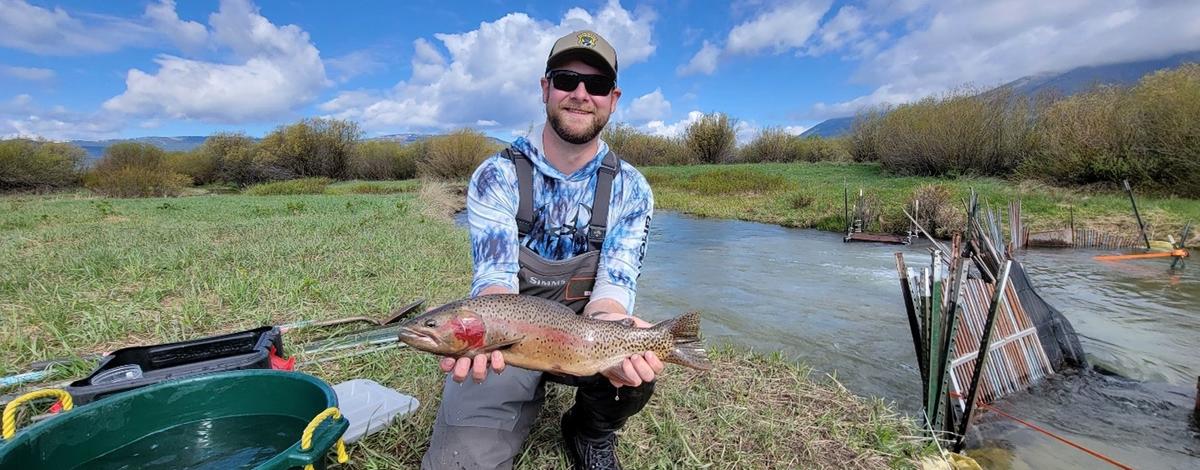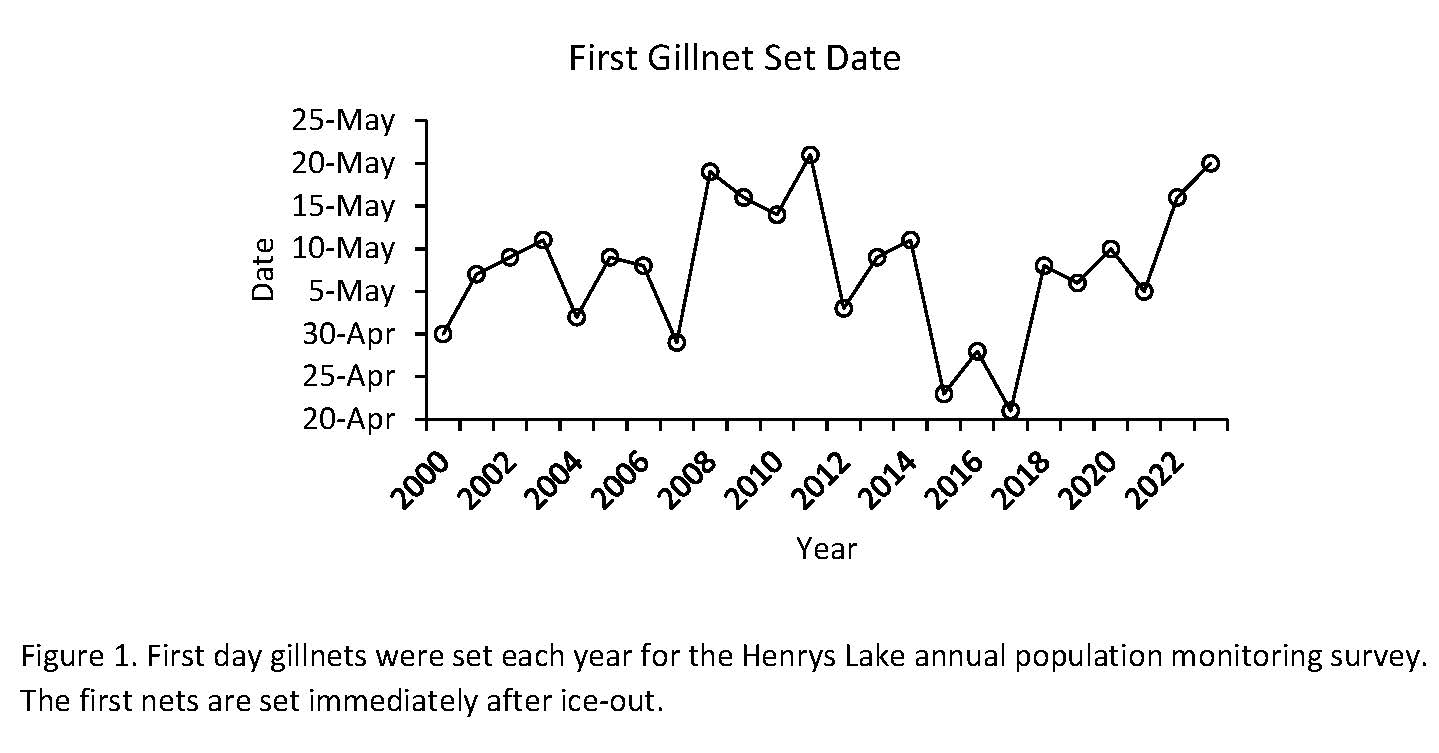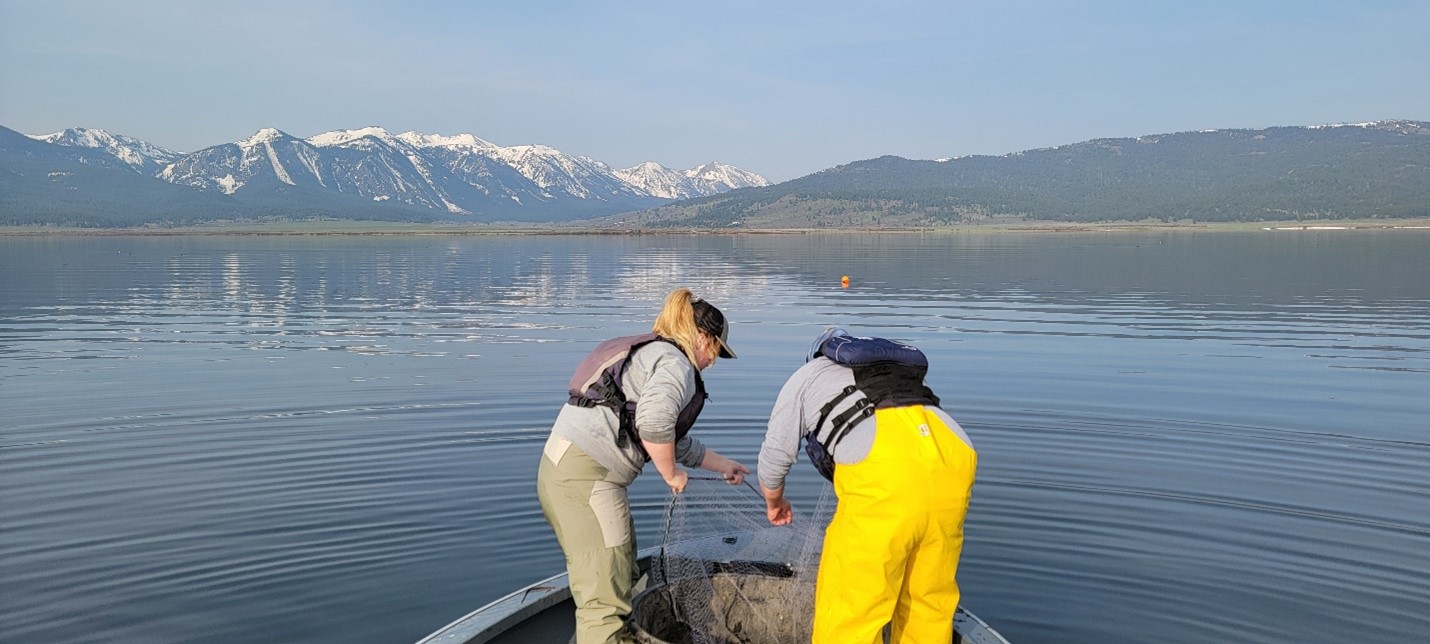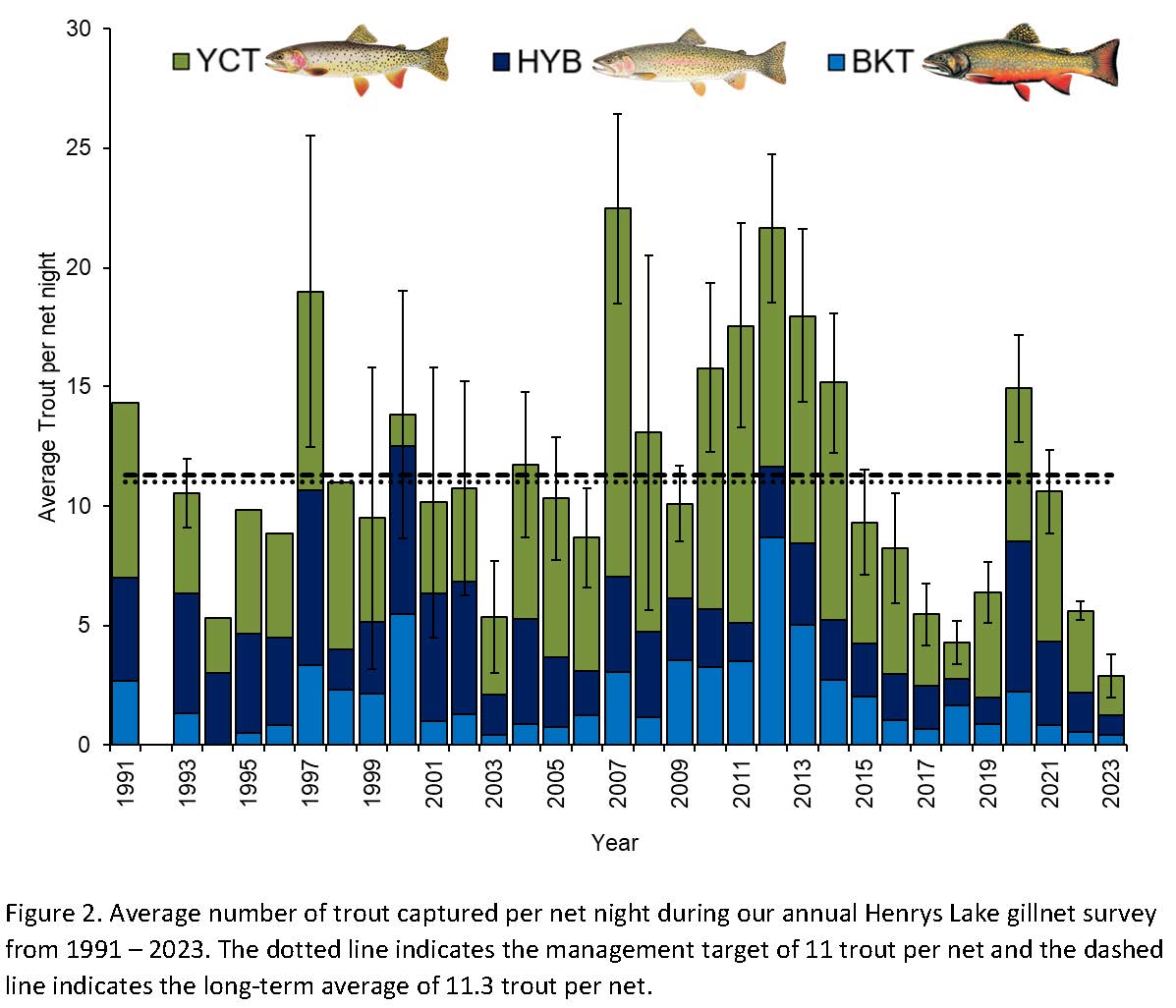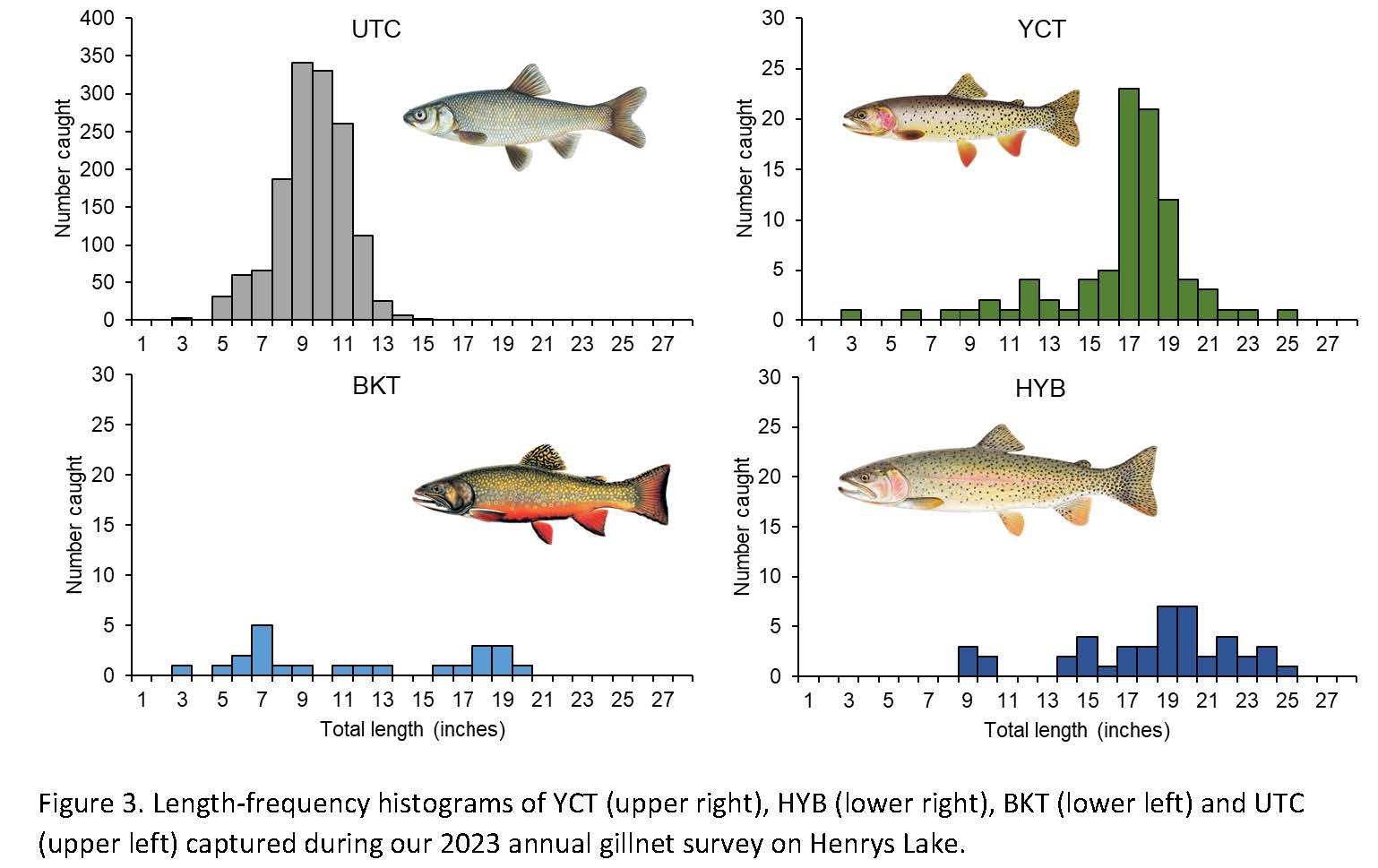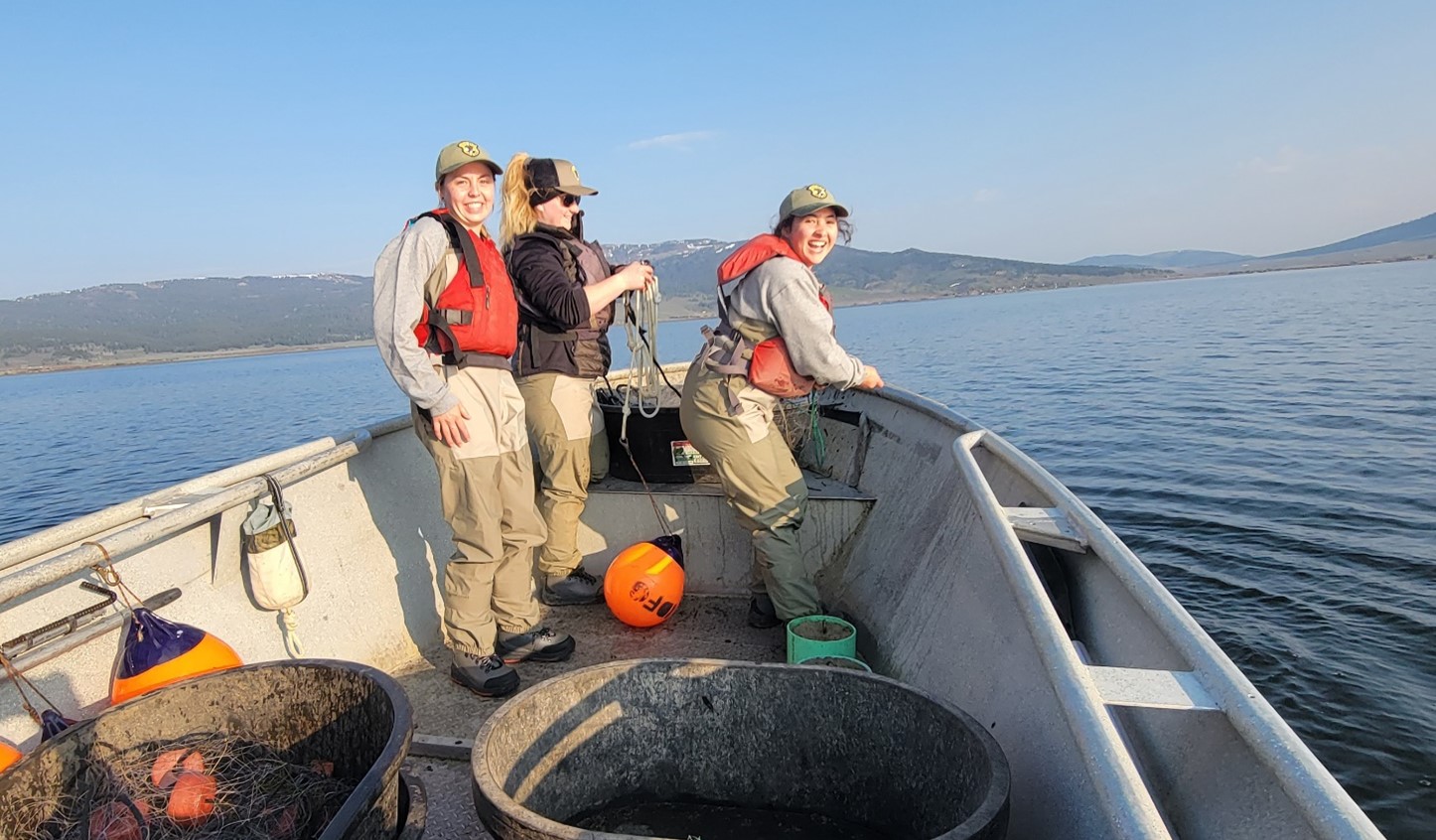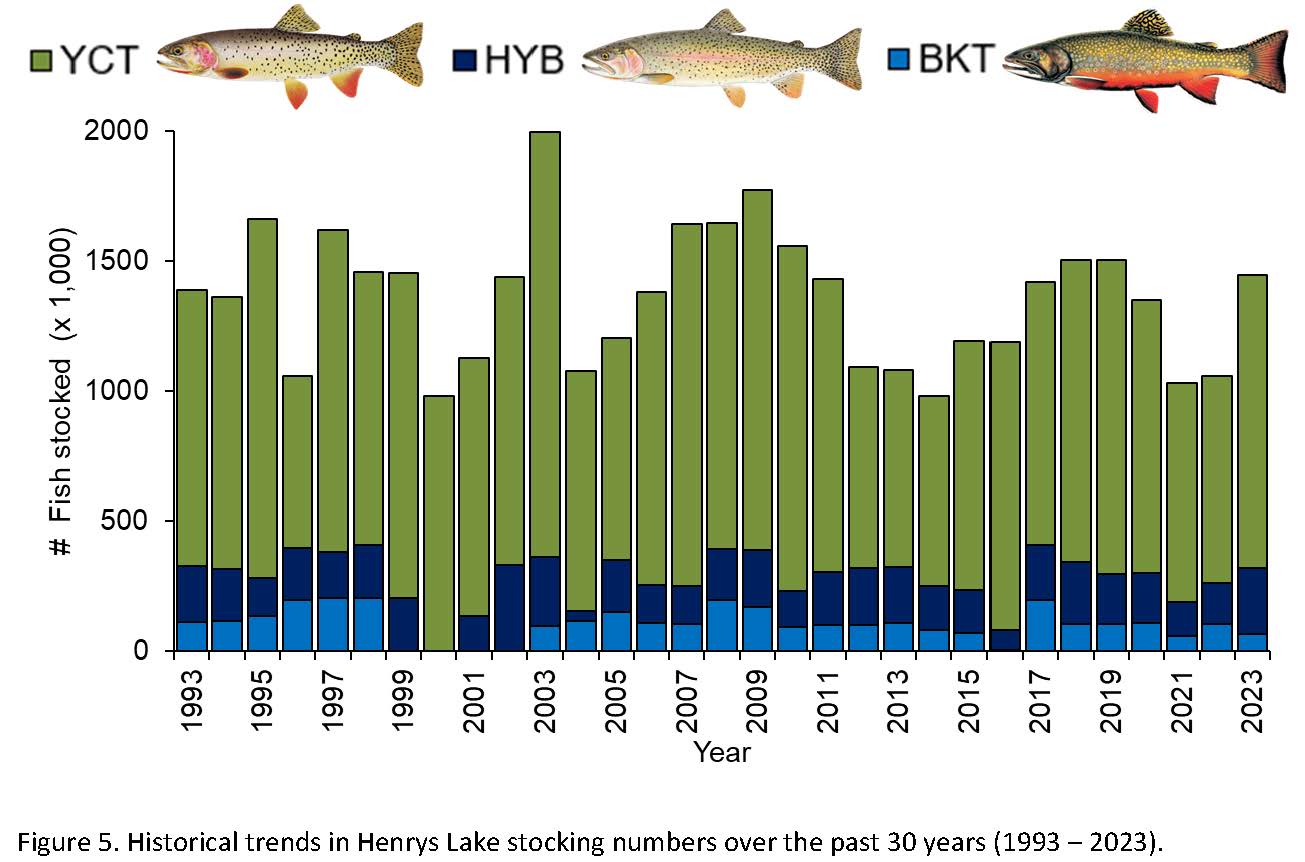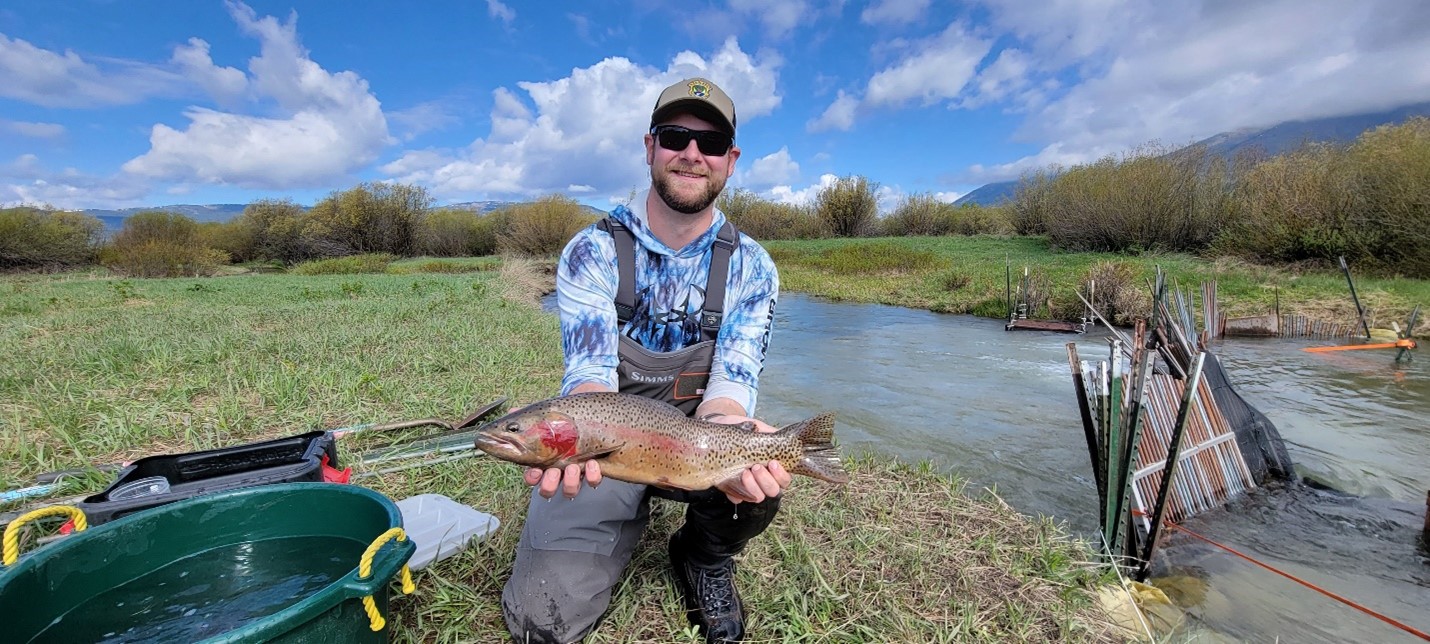Henrys Lake anglers, we’ve got a lot to catch up on! It’s been a busy season so far, and we have several projects in the works. Before we get into all that, I’d like to take a moment to thank the Henrys Lake Foundation for inviting me to attend and speak at their annual fundraising event. I gave a presentation about the state of the fishery and a detailed review of the results of our delayed ice fishing mortality study (more about that here). We had a productive Q&A session after the presentation, which sparked several constructive one-on-one conversations thereafter. It was a genuine pleasure speaking with so many people who have such rich histories with the lake. I’ll be sharing much of the information we discussed at that event with all of you here in this newsletter.
Annual Population Survey
Each year, IDFG conducts a gillnet survey on Henrys Lake to assess the current state of the fishery. We begin the survey immediately after ice-out, which didn’t occur until 19-May this year (Figure 1). We set nets at six sites throughout the lake every night until we reach our goal of at least 50 net-nights of effort. Since ice-out was so late this year, we had to take a brief hiatus over Memorial Day weekend to perform our routine creel surveys but we finished the gillnet survey by June 2nd.

